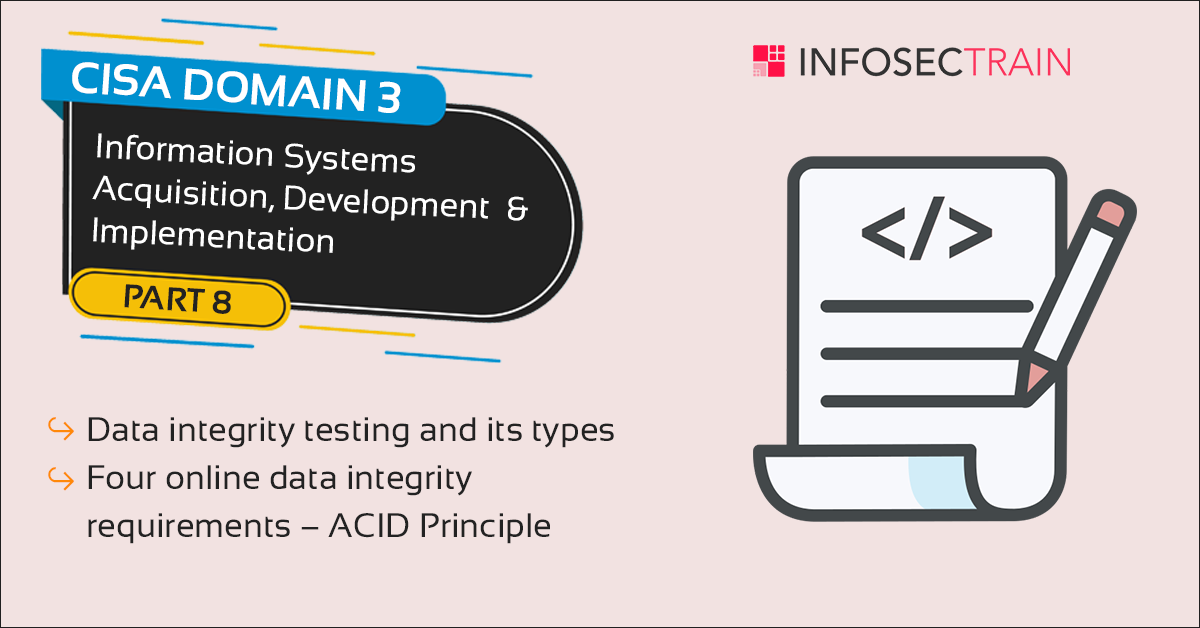CISA Domain 3 – Information Systems Acquisition, development and implementation – Part 8
PART 8 – CISA Domain 3 – Information Systems Acquisition, development and implementation
- What is data integrity testing?
- What are the types of data integrity testing?
- Relational integrity testing
- Referential integrity testing
- What are the four online data integrity requirements?
- Atomicity
- Consistency
- Isolation
- Durability

|
1. Data integrity testing: |
- Data integrity testing is a set of substantive tests that examines accuracy, completeness, consistency and authorization of data presently held in a system
- Two common types of data integrity tests are
- Relational Integrity tests – Relational integrity tests are performed at the data element and record-based levels.
- Referential integrity tests – tests whether the table relationships are consistent. In other words, any foreign key field must agree with the primary key that is referenced by the foreign key.
Points to remember:
|
|
2. Data Integrity in Online Transaction Processing Systems: |
- The four online data integrity requirements known collectively as the ACID principle, which are as follows:
- Atomicity – From a user perspective, a transaction is either completed in its entirety or not at all. If an error or interruption occurs, all changes made up to that point are backed out.
- Consistency – All integrity conditions in the database are maintained with each transaction, taking the database from one consistent state into another consistent state.
- Isolation – Each transaction is isolated from other transactions, and hence, each transaction only accesses data that are part of a consistent database state.
- Durability – If a transaction has been reported back to a user as complete, the resulting changes to the database survive subsequent hardware or software failures.
Points to remember:
|
Part 1, Part 2, Part 3, Part 4, Part 5, Part 6, Part 7, Part 8, Part 9







 1800-843-7890 (India)
1800-843-7890 (India)